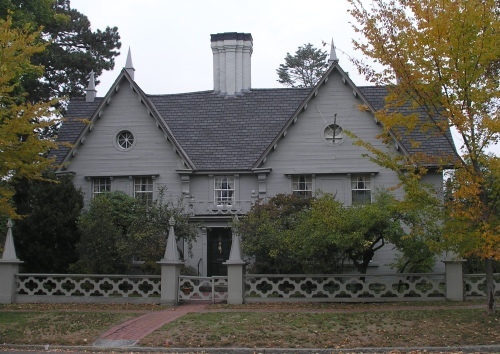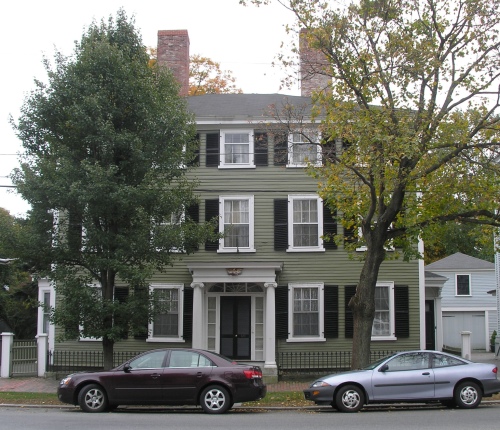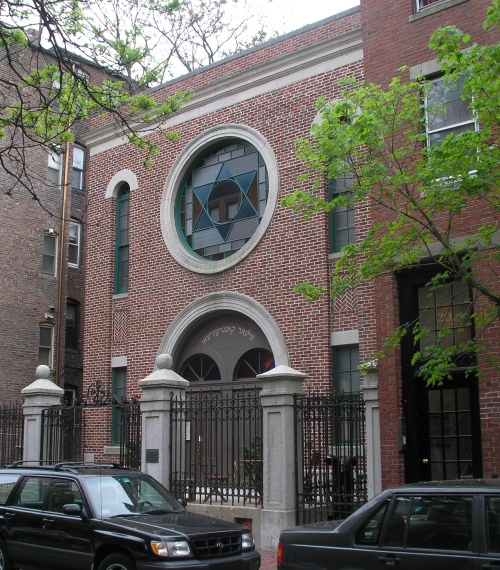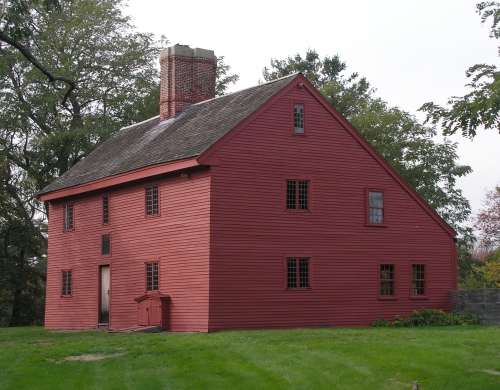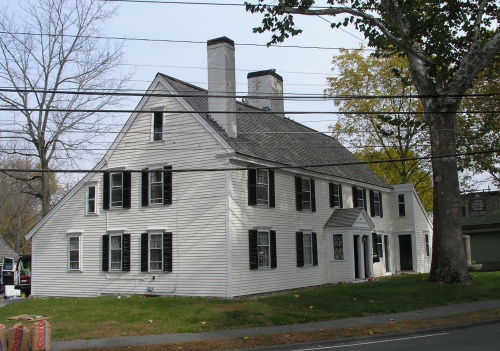Gideon Tucker House (1809)
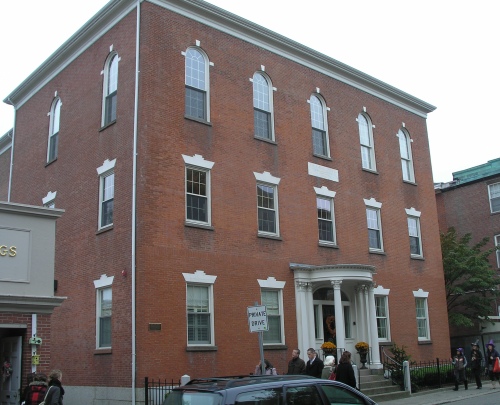
The Gideon Tucker House, also known as the Tucker-Rice House, is at 129 Essex Street in Salem. It was built in 1808-1809 for Gideon Tucker who, according to Old Time Ships of Salem (1917):
was born March 7, 1778, and built and occupied the house on Essex street opposite the Essex Institute. He was clerk for Joseph Peabody and afterwards a partner in that noted shipping firm, which he left to establish a business of his own. He died February 18, 1861. “A venerable man of exact habits and strict integrity.”
Tucker’s house, designed by Samuel McIntire, once looked very similar to the McIntire-designed Gardner-Pingree House across the street, but the Tucker House was significantly altered in 1910. As described in Cousins and Riley’s Colonial Architecture of Salem (1919):
Because of their spaciousness and large number of rooms, the three-story square houses of brick built during the early nineteenth century lend themselves admirably to adaptation as semi-public institutions, and several splendid old mansions have been so utilized. Thus in 1896 the Father Mathew Catholic Total Abstinence Society, organized in 1875, purchased the Tucker-Rice house at Number 129 Essex Street for its headquarters, and considerably remodeled it. […] Much of the handsome interior wood trim remains, but the splendid elliptical porch, one of the best proportioned in Salem, was removed to the garden of the Essex lnstitute for preservation, where it may now be seen with a contemporary three-piece door from the Rogers house on Essex Street and glasswork of attractive pattern.
In more recent times, the house has been converted for use as condominiums.
